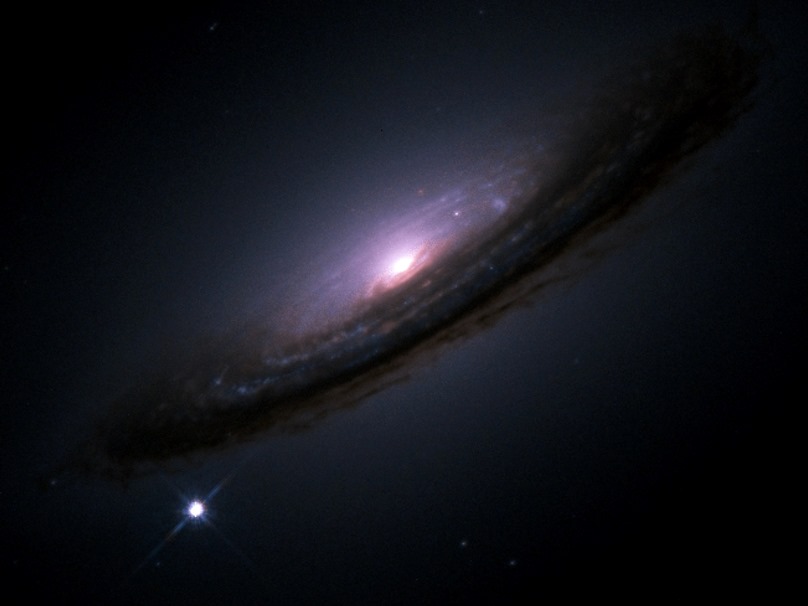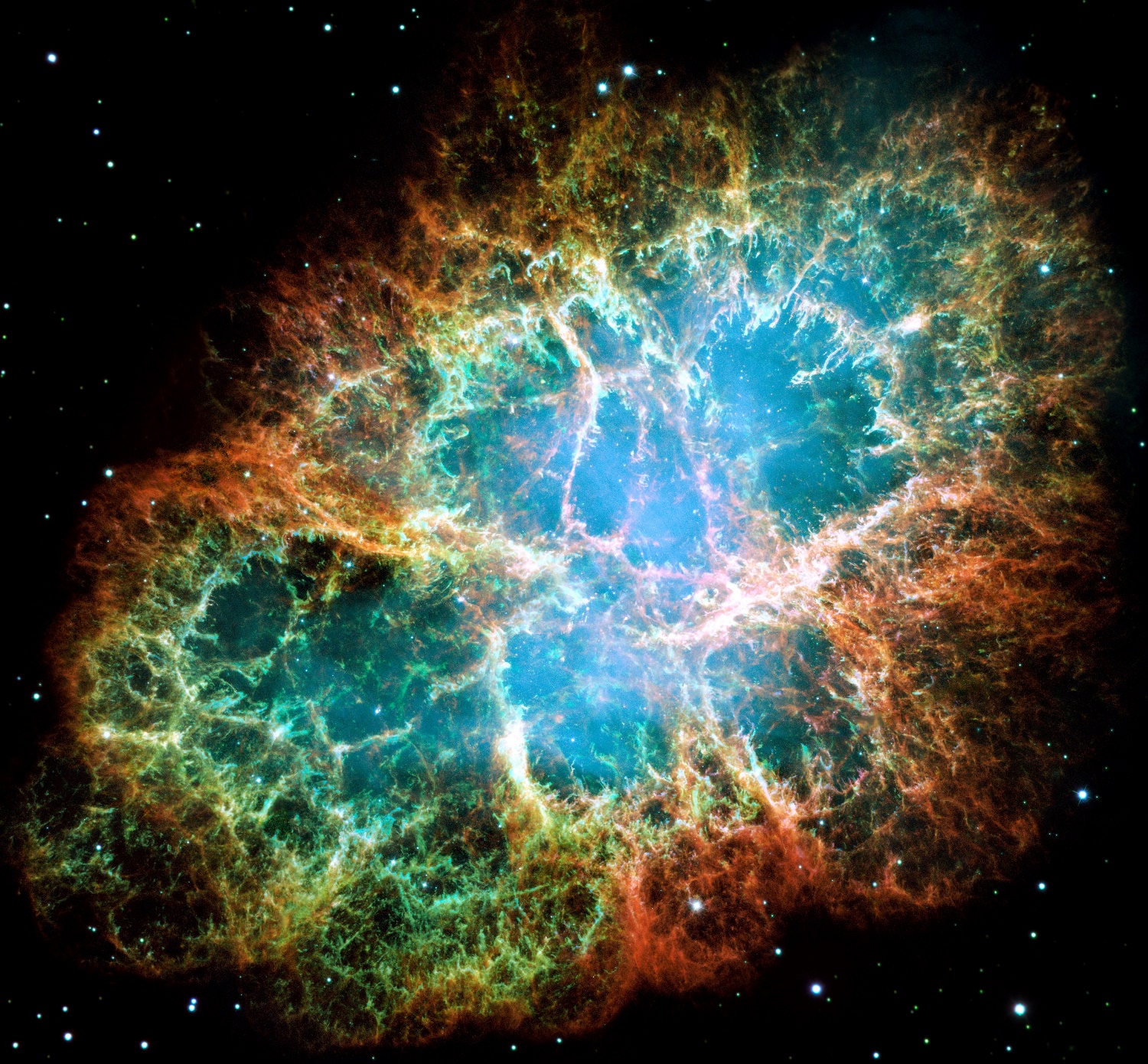Supernovae
To the Israelites the glory of the LORD looked like a consuming fire. (Exodus 24:17, NIV)
You who are far away, hear what I have done; you who are near, acknowledge my power! The sinners in Zion are terrified; trembling grips the godless: “Who of us can dwell with the consuming fire? Who of us can dwell with everlasting burning?” (Isaiah 33:13-14, NIV)
Therefore, since we are receiving a kingdom that cannot be shaken, let us be thankful, and so worship God acceptably with reverence and awe, for our God is a consuming fire. (Hebrews 12:28-29, NIV)
Apparently God enjoys fireworks as much as we do. If the prevailing theories of astronomy are correct, His plan to create a life-supporting universe involved a lot of awesome explosions! On a serious note, though, celestial explosions—called supernovae—are awe-inspiring. They are sobering reminders of the power of our Creator.
To understand why stars sometimes explode, it will be helpful first to consider why they don’t always explode. After all, the sun and other main sequence stars are powered by hydrogen fusion, the same kind of nuclear reaction used in thermonuclear weapons. So, why doesn’t the sun explode? During the main sequence phase of a star’s life, the nuclear furnace in its core is regulated by gravity and thermal pressure—the pressure caused by heat. If the nuclear reaction accelerates too much, the increasing thermal pressure causes the core to expand and cool a little, slowing the reaction. When the reaction slows down, gravity squeezes the core tighter, accelerating the reaction again. Thus, the balance between gravity and thermal pressure acts as a natural thermostat, controlling the nuclear furnace.
During the red giant phase, bursts of energy blast away the star’s outer layers, as discussed on the previous page. However, even these bursts of energy are regulated by thermal pressure, and for this reason the nuclear reactions do not accelerate out of control. Though powerful enough to expel the outer layers of the star, these explosive bursts do not obliterate the core of the star itself.
A white dwarf, on the other hand, lacks that regulation mechanism. Because a white dwarf doesn’t generate heat by nuclear fusion, there isn’t enough thermal pressure to balance the inward pull of gravity, so the dwarf continues collapsing until its atoms are squeezed so close together that the electron orbitals start to overlap. At that point, the Pauli exclusion principle prevents further compression. The matter in a white dwarf is so tightly compressed that each cubic centimeter (about a fifth of a teaspoon) contains a metric ton of mass! In this state, the star is supported not by thermal pressure but by a phenomenon called electron degeneracy pressure—a kind of pressure due to the Pauli exclusion principle preventing the electrons from squeezing any closer together.
If a nuclear reaction begins inside a white dwarf star, the compressed matter can’t expand quickly enough to cool and slow the reaction, so the star explodes. That doesn’t happen very often, because white dwarfs consist mainly of carbon and oxygen forged from lighter elements near the end of the star’s red giant phase. Carbon and oxygen don’t fuse easily. In order to ignite a fusion reaction in carbon, a star must have at least 1.4 solar masses, and the heaviest white dwarf stars are below that threshold. However, sometimes additional matter (e.g. gas expelled from a nearby star) falls into a white dwarf, raising its mass above the critical threshold of 1.4 solar masses. The resulting increase in temperature triggers a runaway fusion reaction.

The bright spot in the lower left corner of this photo is a type Ia supernova that exploded near the outer fringes of a distant galaxy 50 million years ago. Its light reached Earth in 1994.
You may recall from chapter 5 that the most powerful thermonuclear weapon ever detonated was the Tsar Bomba. Its explosive yield was equivalent to fifty million tons of TNT, but the bomb itself weighed only thirty tons. Now imagine a thermonuclear bomb that weighs 1.4 times the mass of the sun! What you are picturing is called a type Ia supernova—an exploding white dwarf star. The star is obliterated in a matter of seconds, but the expanding cloud of superheated plasma continues to shine for months as it spreads out into space. At peak brightness, it is five billion times brighter than the sun!
All type Ia supernovae have approximately the same luminosity (absolute magnitude of light output), since they all have the same mass: the critical mass required for detonation, just slightly over 1.4 solar masses. Moreover, type Ia supernovae are easy to identify, because there is little sign of hydrogen in the spectral lines of the light they produce. For these reasons, type Ia supernovae are excellent standard candles, allowing astronomers to calculate distances to galaxies billions of light-years away.
All other types of supernovae, aside from type Ia, are triggered when the core of an extremely massive star collapses under its own weight. There are several theoretical models concerning the details, but the basic process works as follows. The stronger gravity of a large star keeps its core at a higher pressure and temperature, so the nuclear fusion reactions occur quickly. The larger the star, the faster it burns through its fuel (even though it had more fuel to begin with). The intense heat and pressure inside a large star also allows the star to fuse heavier elements. The star quickly converts its hydrogen to helium and then carbon, nitrogen, oxygen, and other elements up to and including iron. Many of these reactions occur simultaneously, and the heavier elements sink toward the middle of the star, forming layers of increasing density. Iron, the densest element produced in these reactions, builds up in the core.
Iron does not undergo nuclear fusion easily, because its nucleus is the most stable of all atomic nuclei. For this reason, the iron core behaves similarly to a white dwarf: it collapses to the extremely dense state where electron degeneracy pressure prevents further compression. If the star is large enough, however, eventually the core accumulates so much iron that the force of its own gravity overcomes the electron degeneracy pressure, forcing the electrons into the nuclei of the iron atoms in a process called electron capture. (Electron capture is like beta minus decay in reverse: a proton absorbs an electron and turns into a neutron.) When the iron core surpasses a certain threshold of mass, the whole core suddenly transforms into a ball of neutrons and shrinks to a tiny fraction of its original size, then rebounds outward again as the neutrons collide with each other at the center of the star. Meanwhile, the outer layers of the star fall into the vacuum left by the collapsing core. The infalling matter meets the rebounding neutrons in a catastrophic collision, sending violent shockwaves through the star and heating it above the ignition temperature for all sorts of nuclear reactions. The star explodes violently. All that remains is a dense ball of neutrons, typically around ten miles in diameter, called a neutron star.
When the core of a large star collapses to form a neutron star, the resulting supernova is even more powerful than type Ia. In fact, it can be hundreds of times more powerful! Any star heavier than eight solar masses is liable to explode in a supernova, but the largest stars weigh hundreds of solar masses and have diameters more than 1,500 times the diameter of the sun.The exact sizes aren’t known, so it is difficult to determine which star is biggest. One of the leading contenders for “largest known star” is UY Scuti, with an estimated diameter of 2.4 billion kilometers (1.5 billion miles), approximately 1,700 times the diameter of the sun! In a scale model with the sun the size of a basketball, UY Scuti would be large enough to engulf 3 or 4 football fields laid end-to-end! These monsters are responsible for some of the most powerful explosions in the universe. In recent years, astronomers have observed distant supernovae with luminosities at least six times greater than the entire light output of all the stars in our Milky Way Galaxy combined.The supernova iPTF13ajg, observed in 2013, had a peak luminosity more than 6 times brighter than all the stars in our Milky Way combined. In 2015, an even brighter object called ASASSN-15lh was observed, with nearly 20 times the luminosity of the Milky Way. It is controversial whether ASASSN-15lh was really a supernova, however. It may have been caused by a black hole, which can also form when the core of an enormous star collapses. We’ll talk about black holes later in this chapter.
The extreme heat of a supernova causes rapid nucleosynthesis (or nuclear fusion) of all sorts of atoms, producing elements even heavier than iron. Dust and debris from the explosion forms a nebula called a supernova remnant, which may be many light-years in diameter. After dissipating into space and merging with other nebulae, these clouds of stardust may eventually re-collapse to form new stars and also planets like Earth. According to the leading theory of planetary formation, our own planet consists largely of atoms forged in the fires of ancient supernovae. We’ll consider that theory on the next page.
